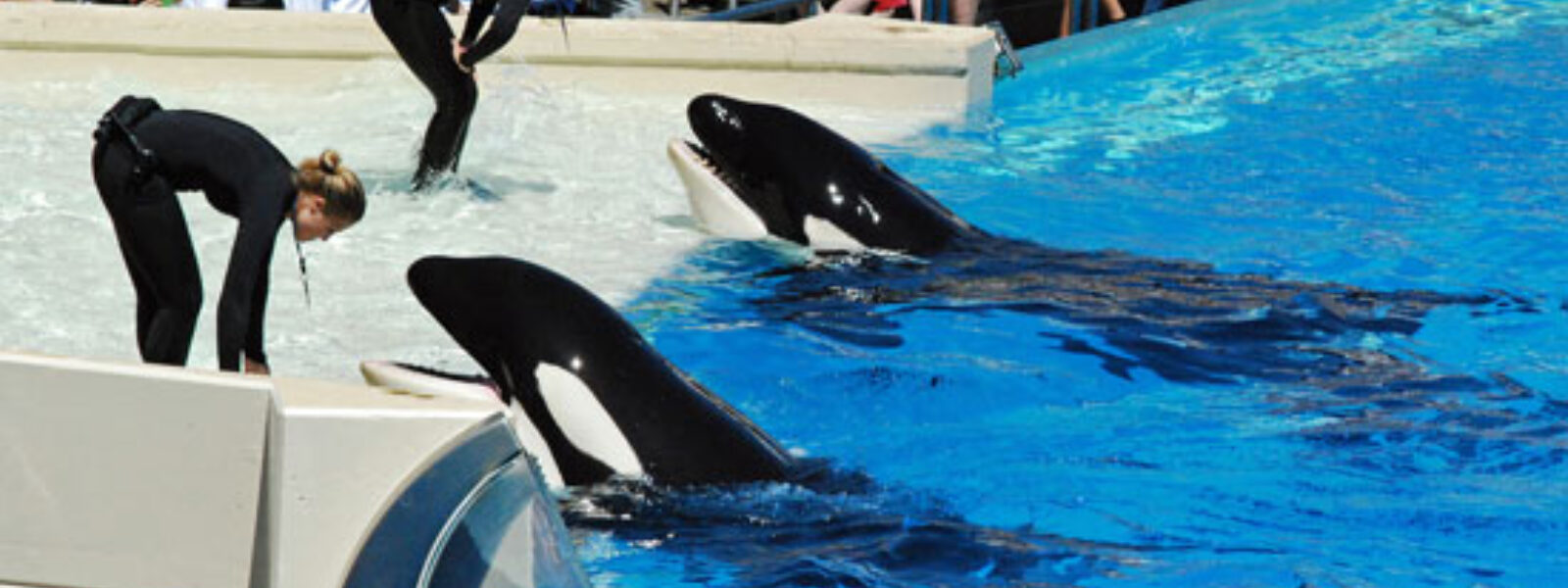

Seems like SeaWorld and it’s CEO Joel Manby just cannot say enough bad things about sea pens – or in official SeaWorld-speak, “sea cages” – for their captive orcas and other cetaceans.
In response to reporters about last week’s news that the National Aquarium in Baltimore was planning to retire their eight dolphins (including 7 bred in captivity) to a sea pen sanctuary in Florida or the Caribbean, SeaWorld made the statement:
“While some may use today’s announcement to continue to call for the release of our orcas to sea cages, our point of view has not changed. Sea cages for our whales are high risk. Most of our whales were born at SeaWorld, and the best, and safest, future for them is to let them live out their lives here, receiving top care, in state-of-the-art habitats, safe from pollution and the other environmental threats they would face in our oceans.”
Then, during an online meeting with shareholders, SeaWorld CEO Manby stated:
"We have the utmost respect for the National Aquarium. We certainly know they're going to take into account what we think are some health challenges of taking dolphins born and raised in an aquarium and placing them in an unfamiliar ocean environment, but having said that, we know they intend to pursue this experiment in a very mindful way and to monitor the health of their dolphins as they move them."
CEO Manby later doubled down on his disdain for sea pens:
"Could it be done to move whales to sea cages? Yeah, it technically possibly could be done. But is it the safest thing for our animals? We do not believe it is."
Sounds like a big “NO” to me.
Sea pens have been used for years to hold cetaceans in captivity. One example is the US Navy, which just a few klicks from SeaWorld San Diego has a large number of bottlenose dolphins and sea lions in sea pens, exploited (unfortunately) for defense purposes.
The proposals for sea pens by scientists and expert marine mammal trainers (some from SeaWorld itself) are aimed at providing the best care available for orcas and dolphins while giving them much more room and a much less sterile environment than the concrete tanks that SeaWorld uses.
And how can they seriously suggest that well designed sea pens pose any threat of pollution or other “dangers” to dolphins and whales? These animals have adapted through thousands of years of evolution to thrive in their oceans homes.
SeaWorld has criticized the Keiko release effort as being a failure. Keiko lived for about five years in his home waters of Iceland.
Keiko was the first captive orca whale ever returned to his home waters, a historic first. He lived out his life free of the stresses and dangers of life in a concrete tank.
His death was indeed unfortunate, but what SeaWorld and Manby and the rest of the captivity industry don’t say is that while the International Marine Mammal Project and the Free Willy - Keiko Foundation were rehabilitating Keiko and bringing him back to his home waters for release, 17 captive orcas died in aquariums.
They also fail to mention that SeaWorld and other aquariums rejected bringing in Keiko to their facilities, leaving him to die in a small Mexico aquarium until the International Marine Mammal Project and the Free Willy - Keiko Foundation efforts saved him.
When Keiko died, he was the second longest-lived male orca ever kept in captivity at that time.
So sea pens can be a healthy alternative to keeping captive orca whales and dolphins alive and healthy, far more so than the constraining and sterile environments provided by small concrete tanks.
For more information on the Keiko project, go to: http://savedolphins.eii.org/ca...
More Bad News for SeaWorld:
Yahoo Finance shows SeaWorld stock plunging another 68 cents per share (4.48%) and is issuing a Strong Sell recommendation for SeaWorld stock. We believe at least part of the reason for the decline is SeaWorld’s continued refusal to retire their orcas and dolphins to sea pens.